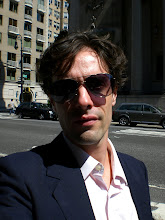
It’s finally time for the reign of Henry VIII to come to its end. Honestly, my interest in The Tudors has waned significantly since it began. With his death imminent, the King mourns his losses, not so much virtue and honor, but irrevocable time, which once lost can never be redeemed. Business still proceeds at court – Bishop Gardiner continuing to persecute Protestants, a French admiral paying his respects in honor of a peace treaty – but mostly, this episode is about taking leave of life on earth. Factions form around Prince Edward and Lady Mary. Gardiner insinuates to Mary that many would prefer to see her on the throne rather than her half-brother with his overweening uncle as regent. Religion thus divides the court as Edward’s Protector, Lord Hartford, is a staunch supporter of the Reformation, while Bloody Mary would wish nothing less than restore Catholicism in her realm. For his part, Henry declares his commitment to his religious reforms, intending to replace the Catholic mass with a simple communion. With the King’s approval, Gardiner has issued a warrant for the Queen’s arrest on charges of heresy. Yet, Henry is adamant in his faith in Catherine. When Lord Wriothesley comes to arrest the Queen, the King angrily rebuffs him – leaving everyone nervous. Henry has Gardiner removed from court.
Meanwhile, Charles Brandon, the King’s closest and longest friend and trusted advisor is taken ill and dies after they see each other for one last time. The King also has visitations of the ghosts of his deceased wives. Catherine of Aragon chides him that their daughter has not yet been married, and reminds him that in god’s eyes she is still his wife. Anne Boleyn reprimands him for not loving their daughter more, and for defending herself against the accusation that led to her downfall. Jane Seymour reproves him that he expected too much of their son, who, she predicts, will die young. Then Henry dreams he is young and vigorous again, looking up toward a variegated heaven, until Death comes galloping from behind and the sky’s turned black. The final scene revolves around Holbein’s iconic portrait of the King, which presents him as he would have like to see himself: majestic, opulent, bellicose, masculine. With that image, the series closes. It’s been a pleasure, but I found my interest waxing and waning a great many times. Next week I will delve somewhat deeper into the history and portrayal of the Six Wives of Henry VIII.
Meanwhile, Charles Brandon, the King’s closest and longest friend and trusted advisor is taken ill and dies after they see each other for one last time. The King also has visitations of the ghosts of his deceased wives. Catherine of Aragon chides him that their daughter has not yet been married, and reminds him that in god’s eyes she is still his wife. Anne Boleyn reprimands him for not loving their daughter more, and for defending herself against the accusation that led to her downfall. Jane Seymour reproves him that he expected too much of their son, who, she predicts, will die young. Then Henry dreams he is young and vigorous again, looking up toward a variegated heaven, until Death comes galloping from behind and the sky’s turned black. The final scene revolves around Holbein’s iconic portrait of the King, which presents him as he would have like to see himself: majestic, opulent, bellicose, masculine. With that image, the series closes. It’s been a pleasure, but I found my interest waxing and waning a great many times. Next week I will delve somewhat deeper into the history and portrayal of the Six Wives of Henry VIII.

I'm going to miss JRM pouting and screaming about. Henry Cavill too, I'll miss his gallivanting about court, fucking women left and right.
ReplyDeleteDiki, you're a dick! That French Briseis was nice, though. I'll grant you that.
ReplyDelete